I recently returned from an adventure into America. Five intrepid adventurers on four motorcycles, traveled from the big city to the rural south and we learned a lot along the way.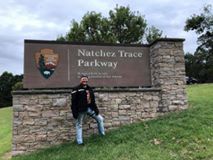
The purpose of the trip was to motorcycle down the Natchez Trace, a 444 mile National Park byway through Tennessee, Alabama, and Mississippi. The Trace has been in use since the 1600’s when it was an Indian trail. Then it was used by rafters who floated their goods down the Mississippi to Natchez. They sold their goods and their rafts and walked home on the Trace. It went from a trail to a road before the Civil War, and in 1930 it was built as a scenic byway.
The Trace is the perfect road for bikes because there are no stoplights, no potholes, no commercial traffic, and a speed limit of 50 mph. It is basically a well maintained road through the woods. The only problem with riding the Trace was that we had to first ride 600 miles to get to it.
We left Chicago and headed south along backroads and saw nothing but soybeans and corn for miles and miles. That’s it, just soy beans and corn, which sounds like a rural AM radio team. “Hey, it’s Soybeans and Corn in the mornin’”. Eventually we came to the town of Casey, Illinois, the home of really big stuff.
Casey prides itself on having the world’s largest rocking chair, the largest pencil, the largest mailbox, the largest wind chime, and loads of other really big stuff. I had no problem sitting in the world’s 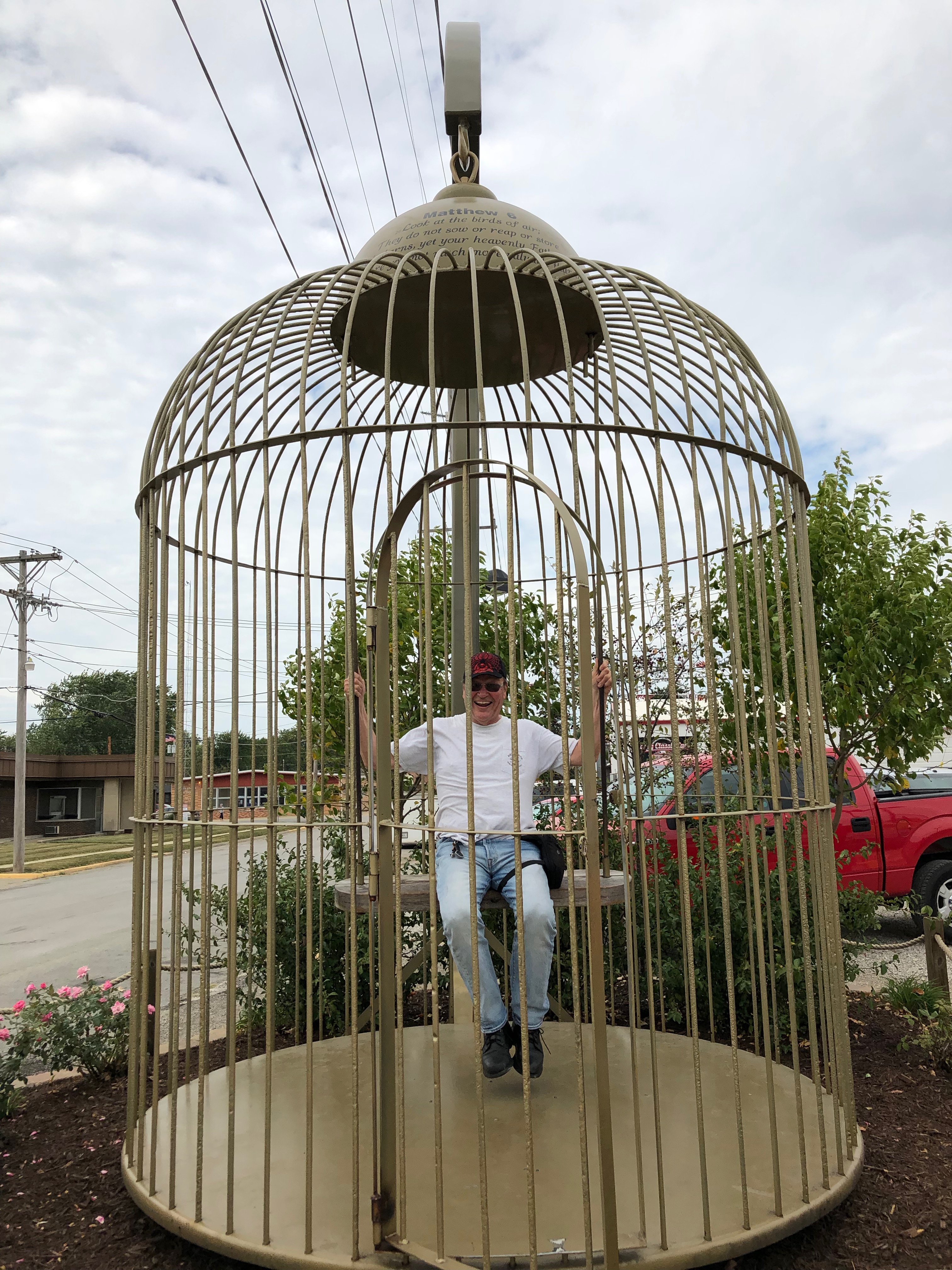 largest bird cage but was told to keep out of the world’s largest wooden shoes. The Guinness World Record giants are the work of Jim Bolin, a Casey native who apparently had too much time on his hands. What I found most interesting is that the giant objects all had relevant Bible verses written on them. For instance, the world’s largest yardstick bore the inscription, “For in the same way you judge others, you will be judged, and with the measure you use, it will be measured to you.” Matthew 7:2. I was so impressed that I put a Biblical verse on my motorcycle. It read, “Thou shalt not steal” Exodus 20:15.
largest bird cage but was told to keep out of the world’s largest wooden shoes. The Guinness World Record giants are the work of Jim Bolin, a Casey native who apparently had too much time on his hands. What I found most interesting is that the giant objects all had relevant Bible verses written on them. For instance, the world’s largest yardstick bore the inscription, “For in the same way you judge others, you will be judged, and with the measure you use, it will be measured to you.” Matthew 7:2. I was so impressed that I put a Biblical verse on my motorcycle. It read, “Thou shalt not steal” Exodus 20:15.
The next day we rode through the Shawnee National Forest in southern Illinois and stopped by the Garden of the Gods. It is an impressive rock canyon that was once under water, thus the rocks have unusually and stunning designs. From there we rode to Metropolis, which we all know is the home of Superman.
In the comic books, Metropolis was the fictional setting for the man of steel, but the Illinois city of Metropolis had the name long before the comics and decided to cash in on it. So they have a giant statue of Superman who looks like he would be right at home in Casey. Right next to the statue is the gift shop filled with more Superman paraphernalia that one could ever use. I liked the bag of stones that were spray painted green and being sold as Kryptonite. I guess P.T. Barnum was right.
It was time to leave Illinois.
PART 2
Across the Ohio River from Metropolis is Paducah, Kentucky. This is where I first started to notice confederate flags flying from pick up trucks. We zipped through Kentucky and spent the Night in Nashville, Tennessee, but we were too tired to enjoy it.
The next morning, we finally got to the Natchez Trace. No more soybeans and corn, we were looking at fields of cotton that looked like giant popcorn blossoms. I think this was the first place Eli Whitney distilled cotton to make cotton gin.
By lunch time, we were in Alabama and had lunch in Muscle Shoals at a little cafe right off the Trace. It was a place visited by the locals who seemed to come in two sizes. The “big boys” averaged 300 pounds, wore overalls, and sported Z.Z. Top beards. The other type weighed about 100 pounds, wore t-shirts, and cooked meth. They all spoke a language that was very similar to English and stared at us like we were from the government.
We departed Alabama and plunged right into Mississippi. This is where I started to hear banjo music The major Mississippi tourist attraction is in Tupelo. It’s Elvis Presley’s birthplace. A large museum / gift shop abuts the modest three room house in which Elvis was born. If you want to take a look inside, it’s a $19 ticket, or $6.33 per room. 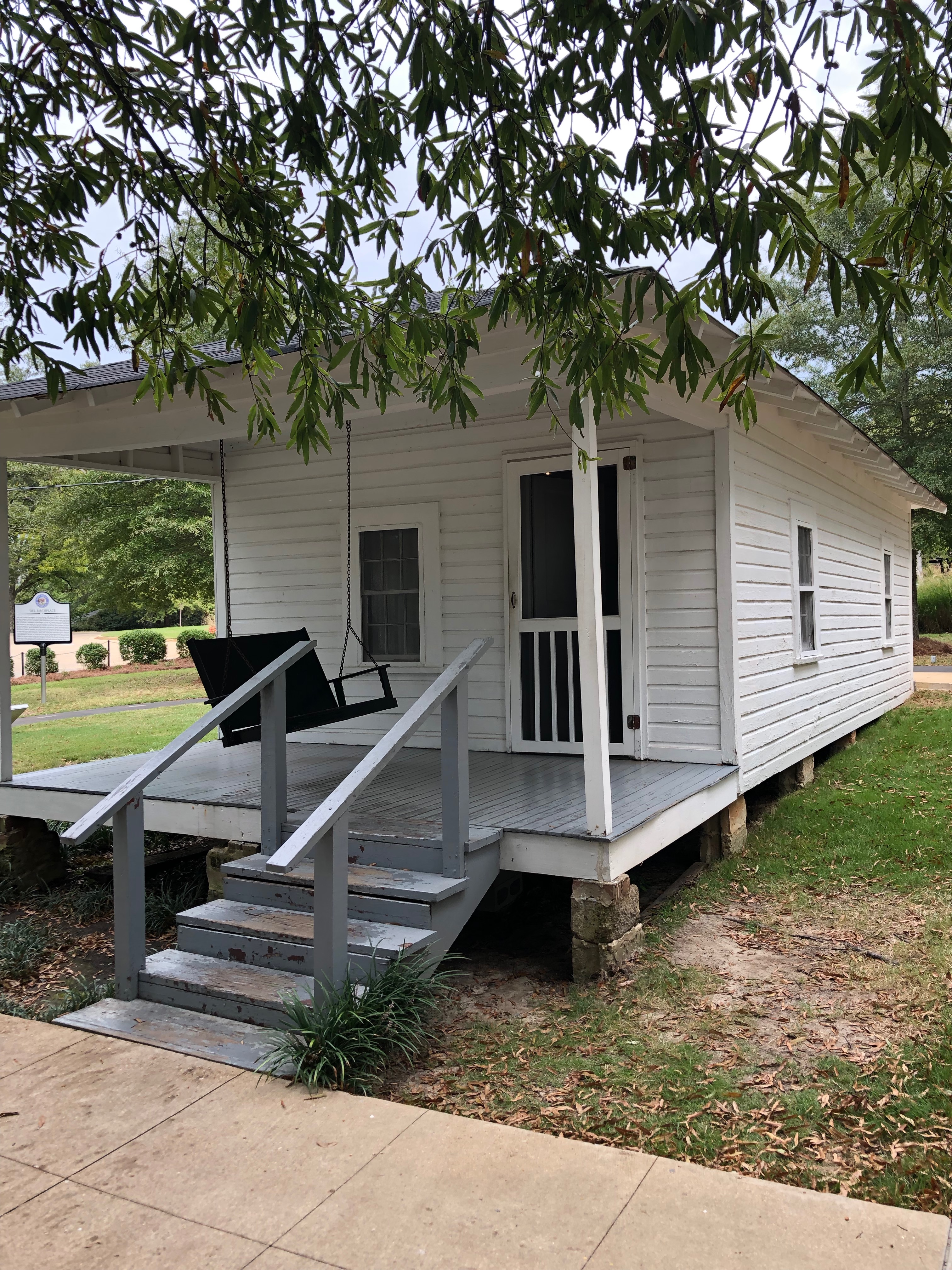
Next to the house was the outhouse Elvis used. Many ElvisHeads were gathered around the one hole when I said, “Isn’t it ironic that he also died on the toilet?” Nobody laughed. Nobody laughed in the gift shop either when I asked if they had any Elvis pill boxes.
We also visited the hardware store in Tupelo where Elvis’ mom bought him his first guitar. There is even a mark on the floor where Elvis stood when he was handed the instrument. I was underwhelmed at the sight.
After spending the night in Tupelo, I couldn’t wait to get back on the road so we headed down the Trace to the cypress swamp. The swamp had a boardwalk over it and signs warning to watch for alligators. Good thing I was wearing the alligator repellant they sold me at the gift shop because we didn’t see any. But as we left the swamp, a gator was spotted in the water along the side of the road. He knew to keep his distance.
Once we got to Natchez, we wanted to see the infamous area called Under the Hill. In the days of the rafters, the Under the Hill area was the notorious gathering place for hookers, thugs, and gamblers. My kind of town
Since we decided to visit the Under The Hill Saloon, the oldest bar in Mississippi, we took a cab. I tried Uber but they don’t exist down there. Our cabbie was named John, and he owned Rock N Roll Cabs. John was in his 70’s and ran his business from the seven cell phones he carried. When he temporarily lost one, he used another to call the number so we could find it. John drove slowly, which was good because he refused to wear a seatbelt which made the seatbelt alarm constantly ringing. John also ignored many traffic signals because he was answering one of his phones, by saying “Rock N Roll.” After hearing him answer the phone like that 15 or 16 times, we adopted it as our adventure catch phrase.
Miraculously, John got us to the bar and back home again and our visit to Mississippi was officially over. The next day we crossed the river into Louisiana.
PART 3
I have visited Dixie many times and I have always been a fan of their cups, but I have only been to the larger cities that I flew into. Louisiana was my first eye opening exposure to the rural south. By now, the accent had gotten so thick that you need an English/Southern dictionary. This, when accented with a Louisiana/Cajun touch, makes the locals sound to me like they are speaking Klingon.
The main mode of transportation down here is the pick-em-up truck Not a Tesla in sight. The average home has 3.5 pick-em-up trucks parked in the front yard. One works, one doesn’t, one is just for parts, and the rusted out shell of the last one is sometimes used as a planter. In addition to the trucks, you will also see old laundry appliances, refrigerators, tires (pronounced “tars”) and a mattress or two in the yard. Yard art takes on a whole different meaning down here. 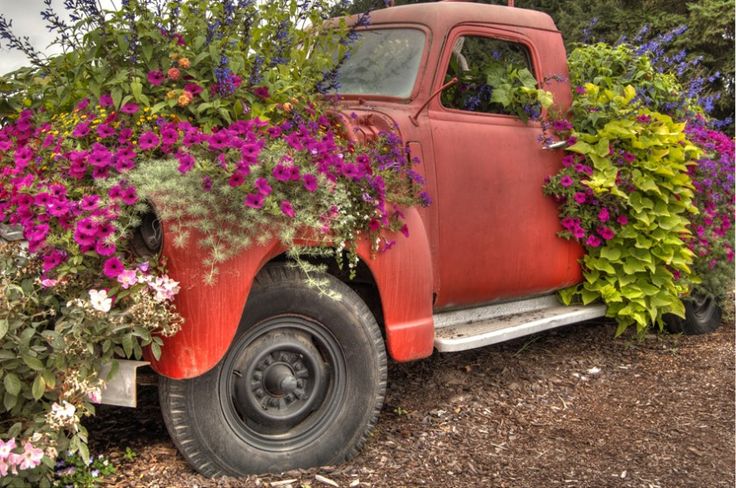
Many of the houses looked badly in need of repair to the point that the TV show “Fix This House” has never been here. Too much of a challenge. And even though the roof of the house may sag, it still supports three to four satellite dishes.
Outside of acquiring indoor plumbing and libraries in this part of Louisiana, the biggest problem is kudzu. Kudzu is an invasive vine that was illegally imported from Japan. ICE officers should be deporting it. This stuff grows fast in warm climates and surrounds and smothers anything it comes across. Kudzu vines cover entire trees, killing them. Kudzu will climb on fences, houses, and eventually the vehicles in the front yard.
After a short romp through Louisiana, we entered Arkansas, the birthplace of President Bill Clinton. Bill was born in Hope, Arkansas, but we didn’t go there. We had already seen Elvis’ outhouse and didn’t need to see another. We also bypassed Little Rock, home of the Clinton Presidential Library. It’s the only presidential library to have books with centerfolds. I also found it interesting that the state motto of Arkansas, which is printed on their license plates is “The Natural State”, just like Bill Clinton liked his women.
Once in Arkansas, I began to notice more and more churches to the point that every town had a church on every block. No synagogs or mosques, but lots of churches. And outside every church was a sign, the illuminated kind with movable letters. And every sign had a different weekly saying. Some of my favorites were; “Need a lifeguard? Ours walks on water”, “Just love everyone. I’ll sort them out later. -God; and “Now serving pumpkin spice communion.”
Our terminus point for the day was Hot Springs, Arkansas, where Central Ave. is Bath House Row and is lined with houses offering baths in the regenerative hot springs water. I did not check out any of the houses so I don’t know if the baths are self serve or if someone else washed you. Either way I hope they change the water between customers.
One surplus that Arkansas has is snakes. These slithering demons are everywhere, even in the middle of the road, where we turned more than one of them into a snakeskin belt.
Continuing in Arkansas, we ascended Magazine Mountain, the highest point in the state. I don’t know how it got its name because when we got to the top, there was nothing to read. There was no Life, People, or Time. Plus, the mountain was completely fogged in on the day we visited. We saw nothing but fog for thousands of miles, but it was nice “natural” fog.
At the bottom of the mountain, we ran into a large group of bikers at a gas station. They were on their way to Fayetteville for a huge biker rally of up to 500,000 bikes. It’s called Bikes, Blues, and BBQ, and definitely sounds like an event t-shirt I have to buy on the internet so I can tell people I was there.
The next day was all about the riding through beautiful Arkansas roads, then a foray into Missouri, past the St. Louis arch, back across the Mississippi and into our home state of Illinois, where the state motto is, “We got a tax for that.”
THRILLING CONCLUSION
Upon entering Illinois, we visited one of the highlights of the trip for me. The Cahokia Mounds  are giant prehistoric earthworks built by native Americans from 800 to 1100 AD. It took 300 years to build Monk’s Mound, one basket of dirt at a time. It stands over 100 feet tall and it is estimated that it took 15 million baskets of dirt to accomplish the build. No body knows for sure why the natives built these mounds but think the larger ones were built for ceremonial purposes. I think they built the mounds because they didn’t have amusement parks back then. A 100 foot mound makes for a good slide using a cafeteria tray for a sled, and if it snows, they had birch bark toboggans.
are giant prehistoric earthworks built by native Americans from 800 to 1100 AD. It took 300 years to build Monk’s Mound, one basket of dirt at a time. It stands over 100 feet tall and it is estimated that it took 15 million baskets of dirt to accomplish the build. No body knows for sure why the natives built these mounds but think the larger ones were built for ceremonial purposes. I think they built the mounds because they didn’t have amusement parks back then. A 100 foot mound makes for a good slide using a cafeteria tray for a sled, and if it snows, they had birch bark toboggans.
Rain accompanied us along old Rt. 66 but that just made the nostalgia seem more real. Route 66 was the only convenient way to travel from Chicago to California in the 50’s and 60’s. They even made a TV show about it. A lot of it has changed over the years but not the Palm Cafe in Atlanta, Illinois. It’s right on Rt. 66 and when you walk in, you walk into the 1950’s. The counter is original, the furniture is original, but the food is fresh and quite tasty.
Across the street from the restaurant was a giant statue of PaulBunyan.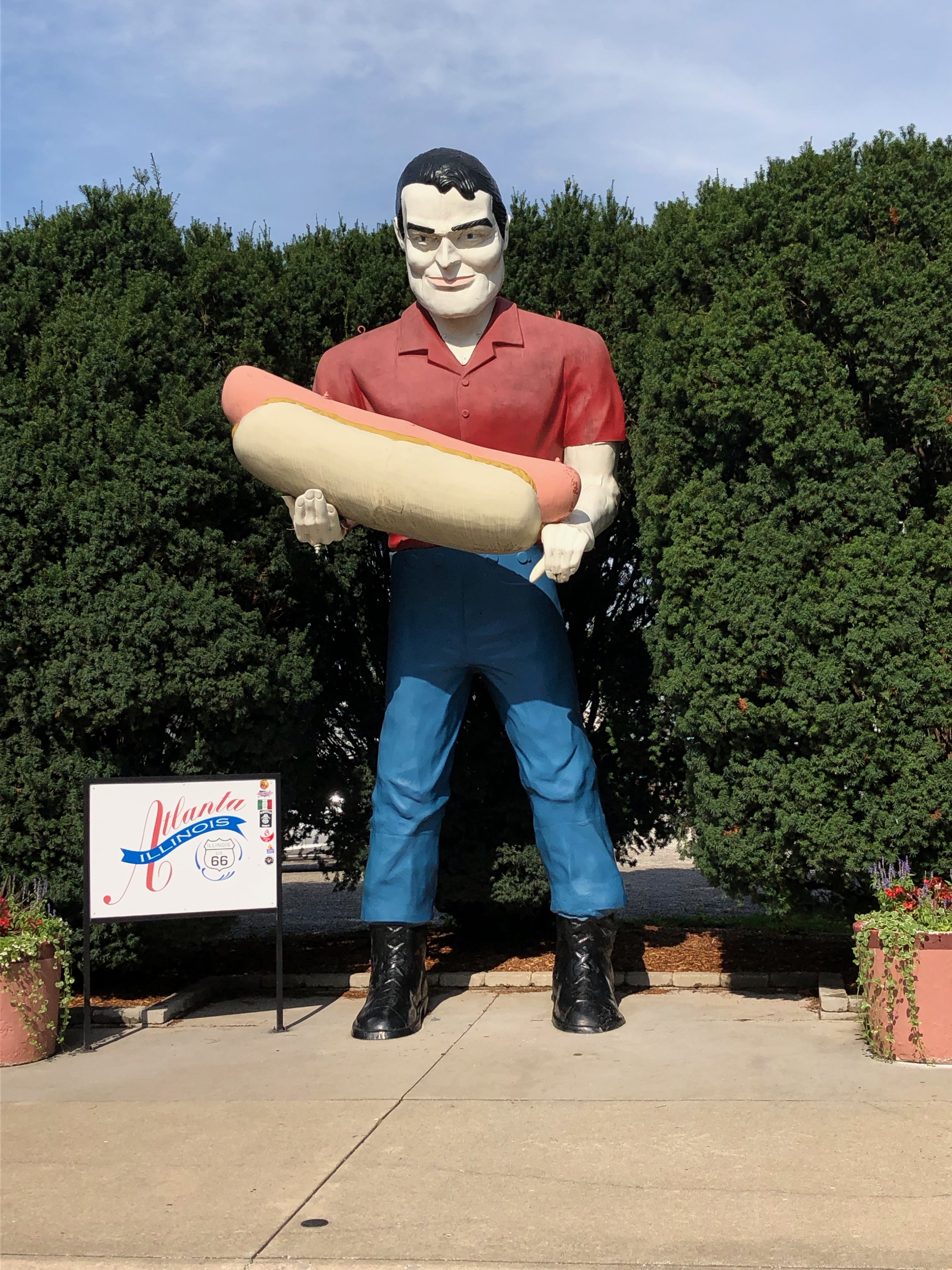 I don’t know if Paul was ever in Atlanta, but the original statue featured him holding an ax. City officials felt that was too threatening so they replaced the ax with a giant hot dog, and if a giant hot dog isn’t threatening, I don’t know what is. I think they should put the ax back in his hand, seat him in the giant chair from Casey, and put it on top of Monks Mound. Now you have a sight to see.
I don’t know if Paul was ever in Atlanta, but the original statue featured him holding an ax. City officials felt that was too threatening so they replaced the ax with a giant hot dog, and if a giant hot dog isn’t threatening, I don’t know what is. I think they should put the ax back in his hand, seat him in the giant chair from Casey, and put it on top of Monks Mound. Now you have a sight to see.
The total math on this trip was 5 friends x 9 days, to the power of 2,400 miles equals a fantastic experience. Thanks for coming along. Rock N Roll!

 Follow
Follow